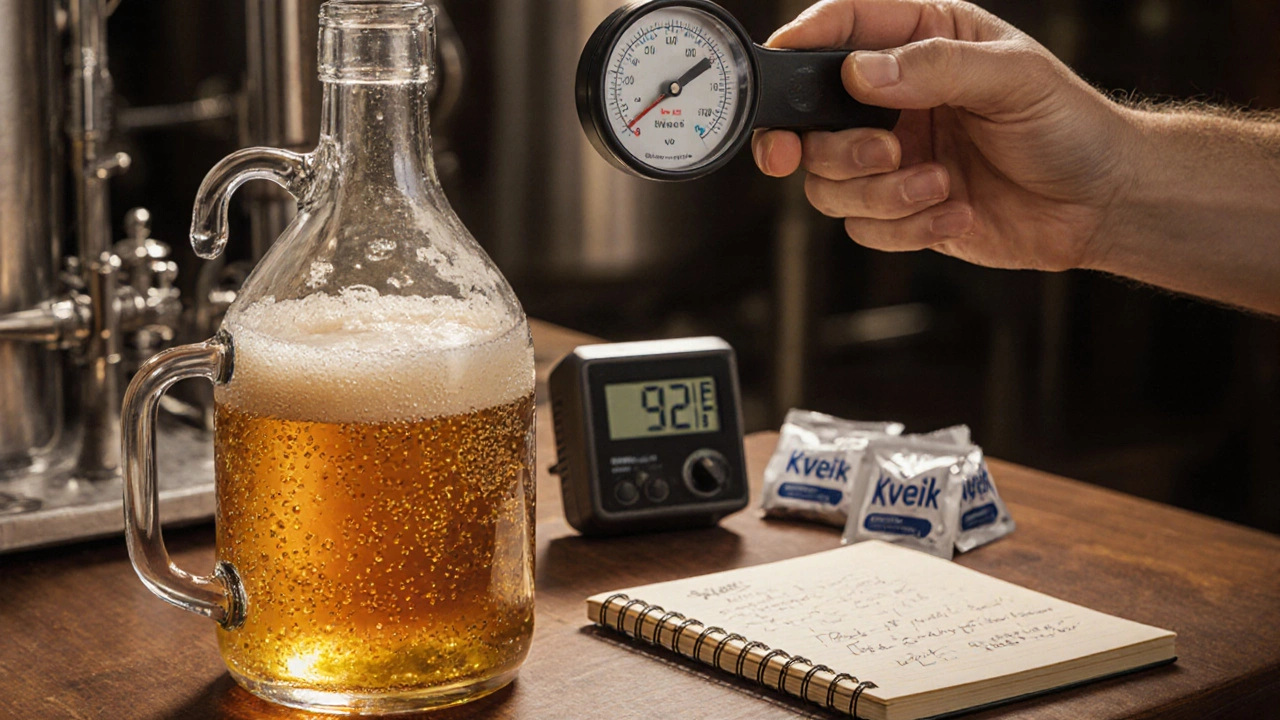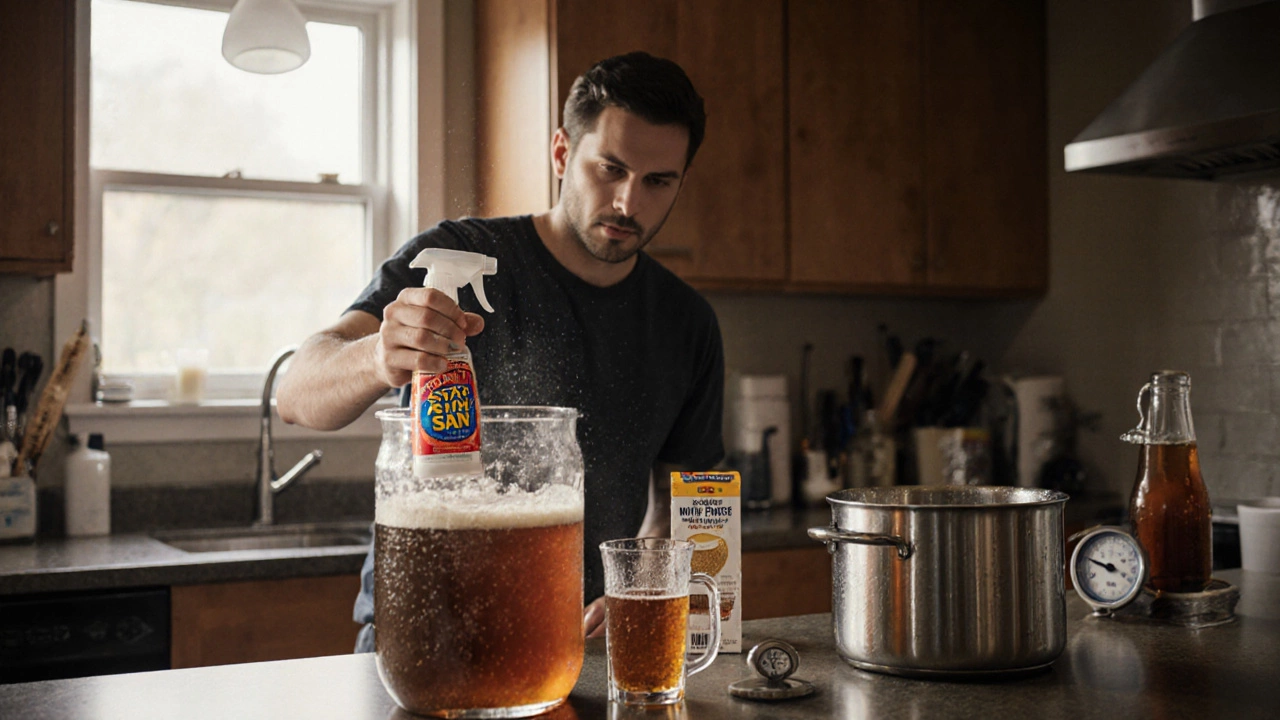Home Brewing: Your Practical Starter Guide
Thinking about making your own beer? You’re in the right place. This page pulls together the most useful info to help you jump into home brewing without getting lost in jargon.
Choosing the Right Kit
First thing you need is a kit that fits your budget and skill level. Beginners usually go for an all‑in‑one starter set – it has everything from fermenter to bottling gear. If you’ve brewed a few batches already, you might upgrade to a modular kit that lets you swap out parts like the kettle or cooling system.
When you compare kits, look at three things: price, capacity, and the type of beer it’s designed for. A 5‑gallon kit will give you about 48 pints, while a 1‑gallon mini kit is perfect for experiments. Cheap kits can save you money upfront, but they often use lower‑quality components that wear out faster.
Legal Basics and Cost Tips
Home brewing is legal in most U.S. states, but each has its own limits on how much you can produce per year. For example, California allows up to 100 gallons per adult per year, as long as it’s for personal use. Knowing the limits helps you avoid fines and keeps your hobby hassle‑free.
Cost per pint is a common question. A basic kit might cost $80 and produce 48 pints, which works out to about $1.70 per pint before ingredients. Adding quality hops, specialty malts, or yeast upgrades can raise that number, but you still end up cheaper than buying premium craft beer.
Yeast choice also impacts flavor and cost. Ale yeasts are forgiving and work well for most beginners, while lager yeasts need cooler temperatures and longer fermentation. If you’re after a specific style, pick a strain that matches the flavor profile you want.
Fermentation time is another area where you can save or waste time. Most ales are ready to drink in 2‑3 weeks, while lagers may need 4‑6 weeks. Extending fermentation beyond the recommended window can add complexity, but it also risks off‑flavors if you go too far.
Finally, think about storage. Keep your kit clean and dry, and replace hoses or gaskets when they show wear. Proper maintenance extends the life of your equipment and keeps each batch tasting fresh.
Ready to brew? Pick a kit that matches your budget, check your state’s brew limits, choose the right yeast, and plan your fermentation schedule. With those basics covered, you’ll be sipping your own brew in no time.
The fastest beer to ferment uses Kveik yeast and can complete primary fermentation in just 2-4 days. Learn which strains work best, how to avoid off-flavors, and why timing matters more than speed.
View DetailsYes, you can brew good beer at home-with the right technique, sanitation, and patience. Thousands do it every year, and many win competitions. Here’s how to start and what really matters.
View DetailsDiscover which yeast is best for homemade beer, explore ale and lager strains, learn how they impact flavor and get expert tips for flawless home brews.
View DetailsCurious if homebrewing is allowed in California? This article cuts through the confusion around the law, giving you the real scoop on what you can and can't do. Learn what's legal, what's not, and how to keep your DIY brewing on the right side of the rules. Packed with tips and fun facts, it's everything a homebrew enthusiast needs to know before firing up that brew kettle in the Golden State.
View DetailsWondering if homebrewing your own beer is worth it? This article breaks down the real cost per pint when you use home brewing kits, factoring in ingredients, equipment, and hidden expenses. Get clear numbers, smart insights, and learn how your brewing choices affect what you pay for each glass. From basic starter kits to splurging on premium hops, you'll know exactly where your money goes. Whether you're just curious or ready to brew, this guide will show if you're really saving or spending more than you think.
View DetailsHomebrewing is a fun hobby, but what if you're short on time? Discover which type of beer you can brew the fastest, making use of modern home brewing kits. Learn practical tips, choose the right ingredients, and understand the basic process to craft your beer without waiting weeks. Perfect for anyone eager to enjoy their homemade brew in no time.
View DetailsHomebrewing might be a popular hobby, but selling your homemade brew isn't as easy as it sounds. This article explores the legal challenges, cultural nuances, and financial implications of trying to turn your passion into profit. Get insights into why regulations exist and practical tips on navigating the beer-brewing landscape while staying legal. Discover the reasons behind strict rules and how they impact aspiring brewers around the world.
View DetailsEver wondered if letting your beer ferment longer makes a difference? Most home brewers have been there, pondering whether to crack open the fermenter early or wait a little longer. This article discusses the impact of extended fermentation on flavor and quality and whether the extra days make your home-brewed flavors more complex or just plain funky.
View DetailsThinking about brewing beer without breaking the bank? Uncover the world of budget home brewing with simple kits that offer big taste without a big price. Learn the essentials of cost-effective brewing, choose the right equipment, and find tips on using everyday items to craft delicious beer at home. This guide makes brewing beer both fun and economical.
View DetailsCurious about how much beer a home brew kit can make? This article breaks down the typical yield from home brewing kits, providing insights on different kit sizes, brewing tips, and fun facts to enhance your home brewing experience. Discover how to choose the right kit for your needs and ensure a successful brewing process. Perfect for both beginners and seasoned brewers looking to optimize their brew sessions. Dive into the world of home brewing and start crafting your perfect pint!
View DetailsCurious about saving money on your brews? Delve into the world of home brewing, where you mix ingredients, time, and patience into a concoction that might just hit the spot. But is your homemade brew kinder on your wallet than a six-pack from the store? We'll break down everything from initial investments to delicious results, helping you see if home brewing is genuinely pocket-friendly.
View DetailsEmbarking on the homebrewing journey entails a delicate dance of patience and timing. After bottling your brew, understanding when it's ready to drink ensures you savor every crafted note. This article explores essential waiting periods, influences on beer maturation, and pro tips to enhance the flavor profile. Dive into the rich tapestry of homebrewing and unlock the perfect sip experience.
View Details












